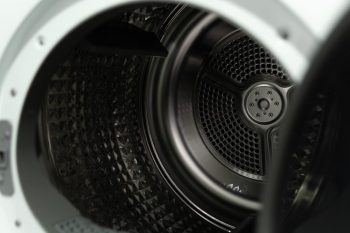
Is the sound of your window air conditioner keeping you up at night? Does it seem like the vibrations are getting worse over time?
Not only are these noises annoying, but they can also cause damage to your AC over time. But don’t worry! It’s a common issue, and there are simple steps you can take to fix the noise and vibrations coming from your window AC.
This article guide will show you five easy steps to effectively stop the window AC vibrations and let you enjoy a peaceful home environment.
Whether you’re a seasoned DIY expert or just starting, these tips will help you solve the problem in no time.
- Clean the coils and filters regularly — Dust and dirt can accumulate in the coils and filters, causing the unit to run louder than normal.
- Keep the fan at optimal speed — Avoid running the fan at too high of a speed, as this can cause excessive vibrations. It can also damage the fan blades over time.
- Check and tighten all screws, bolts, and nuts — Loose screws, bolts, and other parts can cause vibrations and noise.
- Use soundproofing insulation around the unit to muffle noise — You can use acoustic foam or other soundproofing materials to help absorb the noise and vibrations.
- With the right maintenance and precautions — You can keep your window air conditioner from getting too loud and causing vibrations.
Keep reading to learn how to give yourself peace of mind and a quieter space! So, get ready to silence those pesky vibrations once and for all!
How To Stop Window Air Conditioner Vibrations
Here’s what you need to do to stop the noise and vibrations coming from your window AC:
Step #1: Check the Level of Your Window Air Conditioner
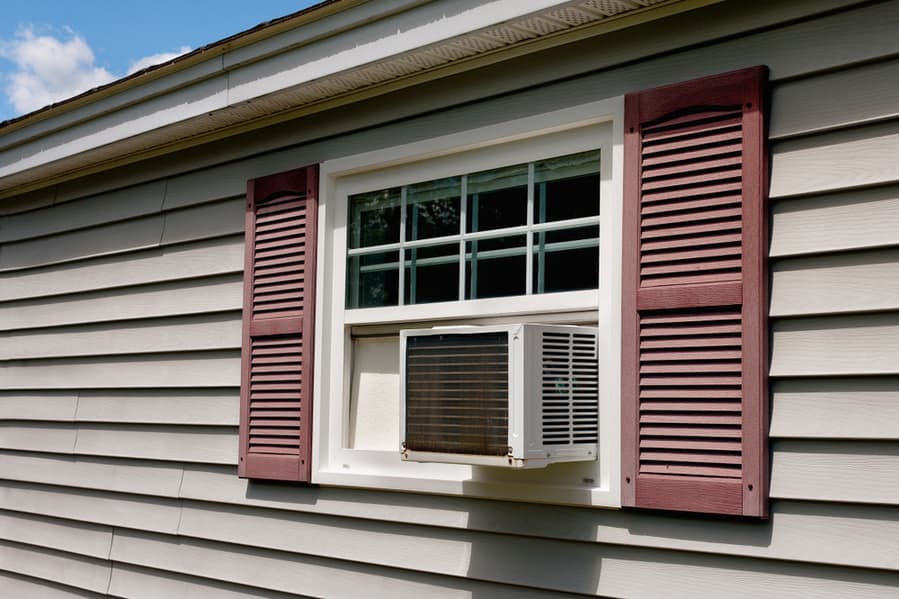
One of the main reasons for the window air conditioner making vibrations is an unlevel unit. To check if your air conditioner is level, you’ll need a spirit level or a carpenter’s level.
Place the level on the horizontal and vertical sides of the air conditioner and see if it’s balanced. If not, you’ll need to adjust the legs or brackets that hold the unit in place until it is level.
Here’s what you need to do:
- Turn off the power to the air conditioner.
- Adjust the legs or brackets until the air conditioner is level.
- You may need shims or foam weather stripping to achieve the correct level.
- Check the level again with the spirit level to ensure the unit is accurately leveled.
By ensuring that the air conditioner is level, you can stop the unit from vibrating and improve the unit’s overall performance. So, take the time to double-check that your unit is accurately leveled before moving to the next steps.
Step #2: Secure the Window Air Conditioner
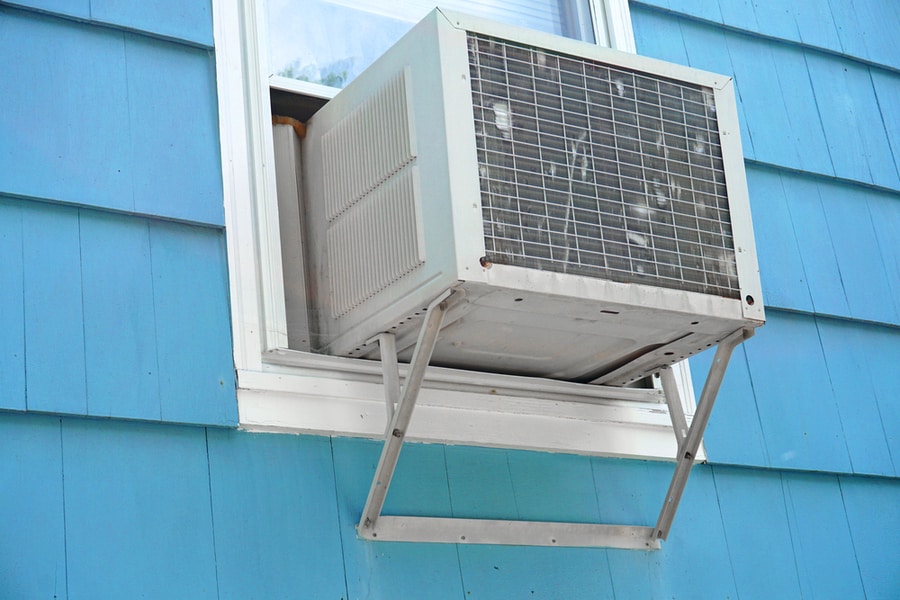
If your air conditioner is not securely installed, it can cause excessive noise and vibrations. This can be due to loose screws, bolts, or even a gap between the air conditioner and the window.
To stop the AC unit from vibrating, you’ll need to ensure that it is properly secured to the window frame.
Here’s what you need to do:
- First, turn off the power to the air conditioner and remove the front cover.
- Check all the screws and bolts that secure the unit components. Tighten any loose screws, bolts, or wing nuts.
- Don’t over-tighten the screws or bolts, as this can cause more damage.
- Check for gaps between the air conditioner and the window frame and seal them if necessary.
- Replace the front cover and turn the power back on.
Properly securing the window frame’s air conditioner can prevent the unit from vibrating and improve its overall stability.
Over time, the foam weather stripping and other materials used to seal the window AC in place may break down or become worn out. If this is the case, you’ll need to replace them.
Step #3: Check and Tighten the Loose Fan Blades
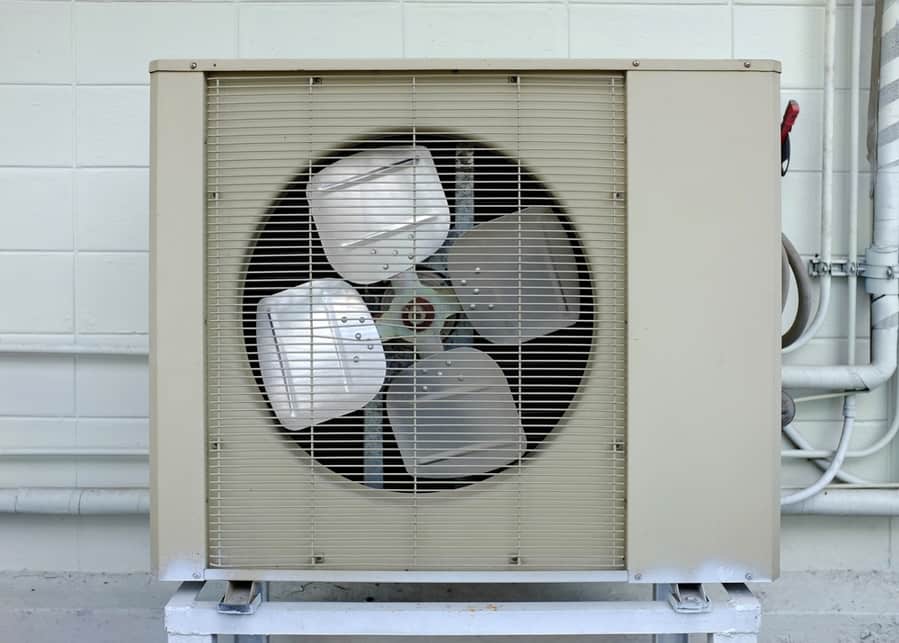
If your window air conditioner is making a rattling noise, it could be due to loose fan blades. The fan is responsible for circulating the air, and a loose blade can cause vibrations that lead to a rattling noise.
Here’s what you need to do:
- First, turn off the power to the air conditioner and remove the cover.
- Next, check the fan blades and ensure each blade is securely attached to the fan motor.
- If you notice any loose blades, tighten them with a screwdriver.
- Fan blades may accumulate dust and dirt over time, causing vibrations. Clean them using a soft scrubbing brush or vacuum.
- If the fan blades are severely damaged or bent, replace them.
- Once the fan blades are in good condition, replace the cover and turn the power back on.
In some cases, the fan motor may be the source of the vibration, so it may need to be repaired or replaced. It’s important to handle the fan blades with care.
If you’re unsure how to repair or replace the fan blades, it’s best to call a professional for help.
Replace the damaged fan blades and motor as soon as possible, as they will cause further damage to your air conditioner unit.
Step #4: Check the AC Motor and Compressor

If the vibration persists, it could be due to an AC motor or compressor issue. The motor is responsible for powering the fan and compressor, while the compressor is responsible for cooling the air.
Over time, the lubrication in the motor can become insufficient, leading to unwanted noise and vibrations.
Here’s what you need to do:
- Turn off the power to the air conditioner.
- Remove the front cover and inspect the motor and compressor for any signs of wear and tear.
- Add a few drops of oil to the caps and motor shaft to improve lubrication.
- Check the compressor for any loose connections or worn-out components and tighten or replace them as needed.
- Turn the power back on and test the unit for vibrations.
You can help ensure your air conditioner runs smoothly and minimize unwanted noises and vibrations by checking and maintaining the motor and compressor.
If you’re unsure how to access or maintain these components, it is best to seek assistance from a professional.
If your window AC unit is over eight years old, it may be time for a replacement, as the older models tend to be noisy and vibrate more. Replacing the unit with a newer, energy-efficient model can solve the problem.
Step #5: Place Anti-Vibration Pads or Mats Under the AC Unit
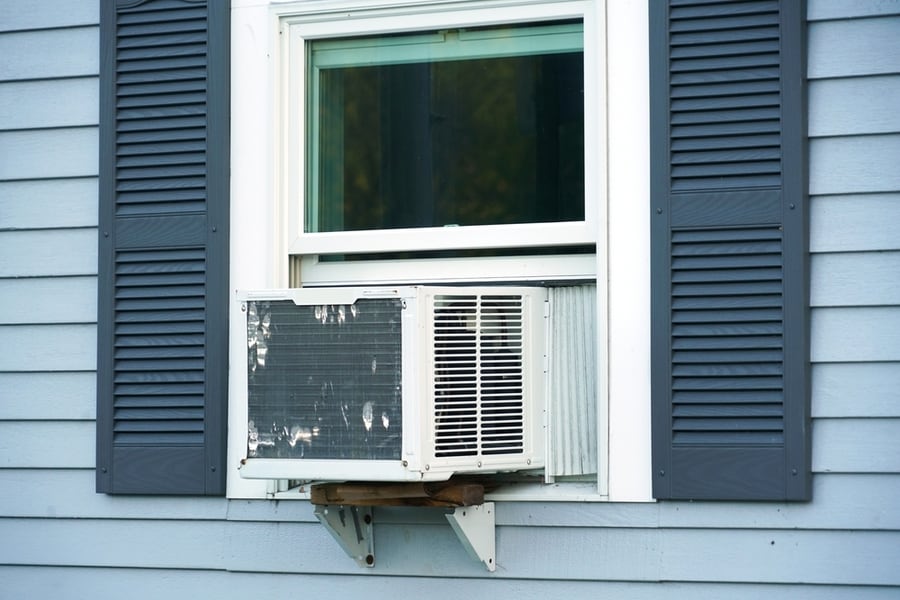
You can also place anti-vibration pads or mats under the unit to reduce unwanted vibrations from your window air conditioner.
These materials are designed to absorb the shock and minimize the transfer of vibrations to the surrounding surfaces.
Here’s what you need to do:
- First, turn off the power to the air conditioner.
- Next, remove the air conditioner from the window and place it on a flat surface.
- Next, place the anti-vibration pads or mats under the feet of the air conditioner.
- Next, replace the air conditioner with the window frame and secure it.
- Finally, turn the power back on and test the unit for vibrations.
By using anti-vibration pads or mats, you can greatly reduce the amount of noise and vibrations from your air conditioner.
This is a simple and affordable solution to ensure optimal performance and comfort.
- Never open the air conditioner without first disconnecting the power.
- Always wear protective equipment when handling potentially dangerous components.
- Don’t use oil if your air conditioner motor and other components are already well lubricated, as this could cause more damage.
- Read the manufacturer’s instructions before making any repairs or maintenance.
- Never attempt any repairs if you don’t feel comfortable or knowledgeable enough. Seeking professional help is always recommended.
Conclusion
Noisy window air conditioners can cause a lot of discomfort, but you don’t have to live with it. With a few simple steps and some elbow grease, you can stop the noise and vibration from your air conditioner.
Start by examining the level of the unit, fill any gaps with foam weather stripping, and tighten any loose fan blades, screws, and bolts. Next, check the motor and compressor for wear and tear, and place anti vibrations pads and mats under the unit.
With these easy solutions, you can fix your vibrating window AC unit and improve its overall performance.
You may need to consult a licensed HVAC technician if the vibration persists. They have the knowledge, skills, and tools to diagnose and fix any issues with your window air conditioner.
Frequently Asked Questions
Do I Need To Replace My Air Conditioner if It Is Vibrating?
No, not necessarily. Usually, the vibration issue can be resolved by simply leveling the unit, tightening the bolts and screws, cleaning the coils and filters, or checking the fan motor and blades.
If these simple fixes do not solve the problem, it may be necessary to replace certain parts, such as the fan blade or motor. In some cases, it may be necessary to replace the entire unit if it is beyond repair.
Is It Normal for the Window AC To Vibrate?
Yes, some vibration is normal for window air conditioners, especially when they are first turned on or when the fan runs at high speeds.
However, excessive vibration or rattling can indicate an issue with the unit. Therefore, it’s important to promptly address the excessive vibration issue to prevent further damage to the unit.





